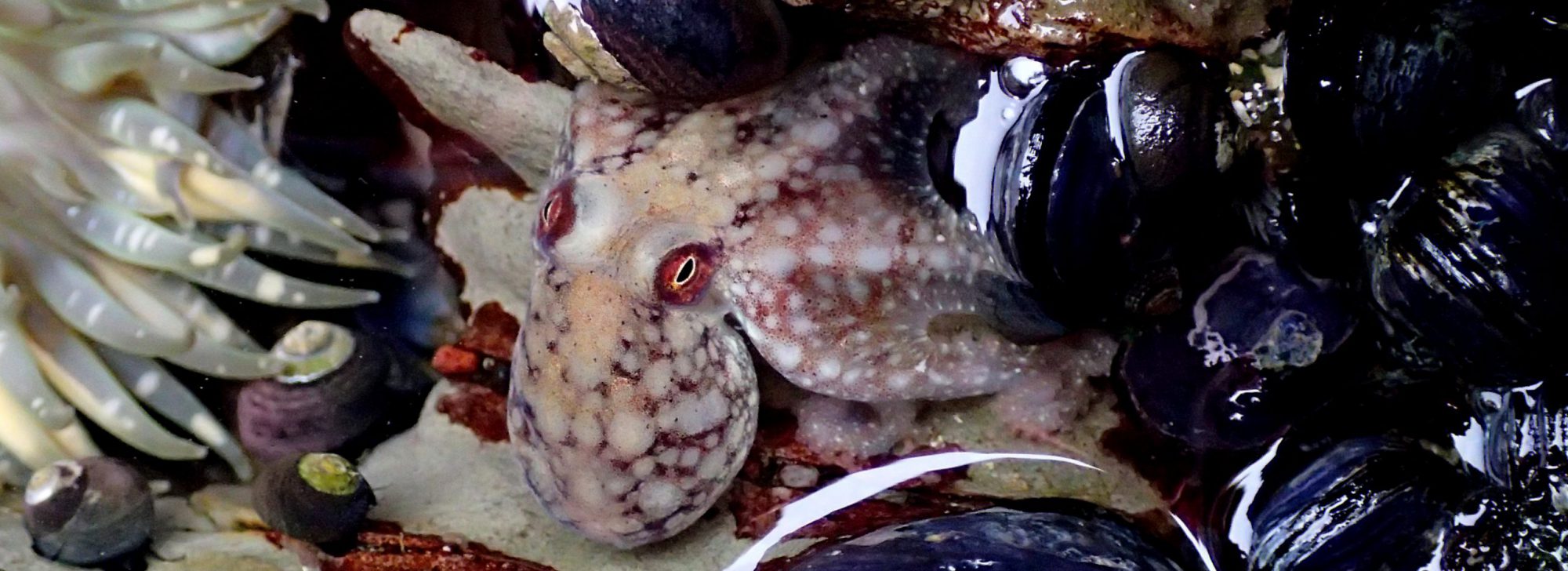For several weeks now I’ve been raising another batch of bat star (Patiria miniata) larvae, from a fortuitous spawning that occurred in early January. Since this is rather old hat by now I’m not diligently taking photos or drawing the larvae as often as I would have years ago when this kind of undertaking was new to me. But I still change the water twice a week and look at them on Fridays, and I still have the set-up that attaches my old phone to the microscope so I can take pictures of them.
Last Friday it occurred to me that: (A) my gizmo holds the camera steady over the microscope, so I can take pictures at multiple focal planes within objects under the scope; and (B) I have software that will stitch those many snapshots into a single image. Neat!
So I made this:

2021-02-19
© Allison J. Gong
This larval stage is called a bipinnaria or a brachiolaria. From top (anterior end) to bottom (posterior end) the larva is about 1 mm long. It swims with the anterior end in front. In some sea stars the bipinnaria grows long arms, at which point we call it a brachiolaria (‘brachio’ = ‘arm’ in Greek). Bat stars don’t grow long arms, so the distinction between bipinnaria and brachiolaria is much fuzzier.
I took 11 photos of this larva, each one focused on a different horizontal plane, and did a focus merge in my photo processing software. Crossed my fingers as the software did its magic, and then peeked at the result. It worked! When looking through the microscope I have to focus up and down through the body to get an idea of its three-dimensional structure. But if the animal holds still long enough, I can do the focus merge thing and get images like this one.
And that slight halo that you see around the exterior surfaces of the larva? That is not an artifact of the photo taking or processing. That halo is due to the cilia that cover the body. There is a ciliated band, which you can see as the dark gold ribbon that snakes along the lobes of the body, and the other body surfaces are ciliated as well. The ciliated band is what the larva uses to swim through the water. Each photo freezes the ciliary action at the moment it was shot, but stitching several photos together causes the cilia to blur into that pale halo.
Nifty!

Ooh, very cool!